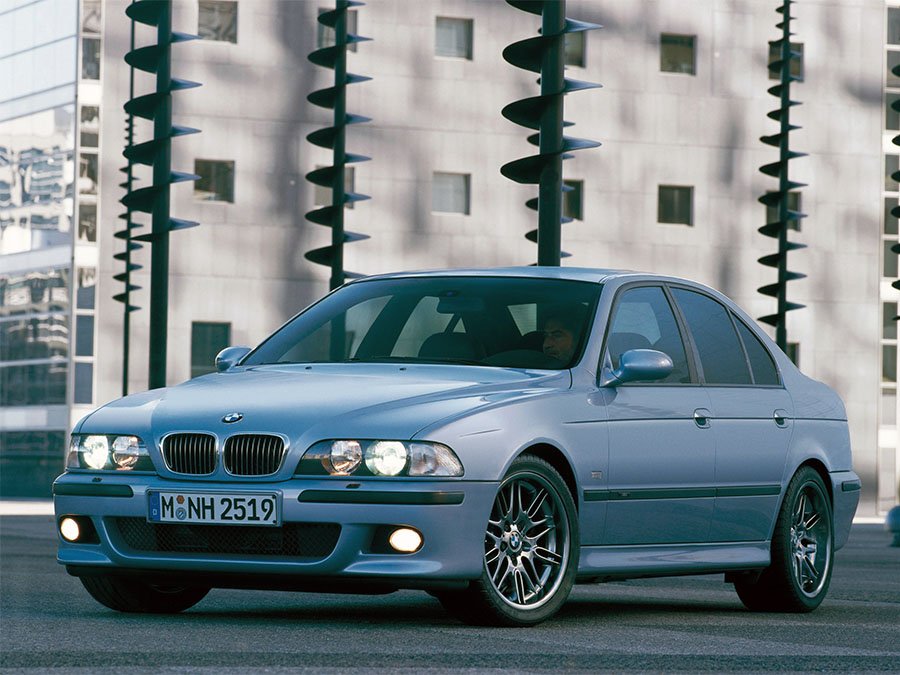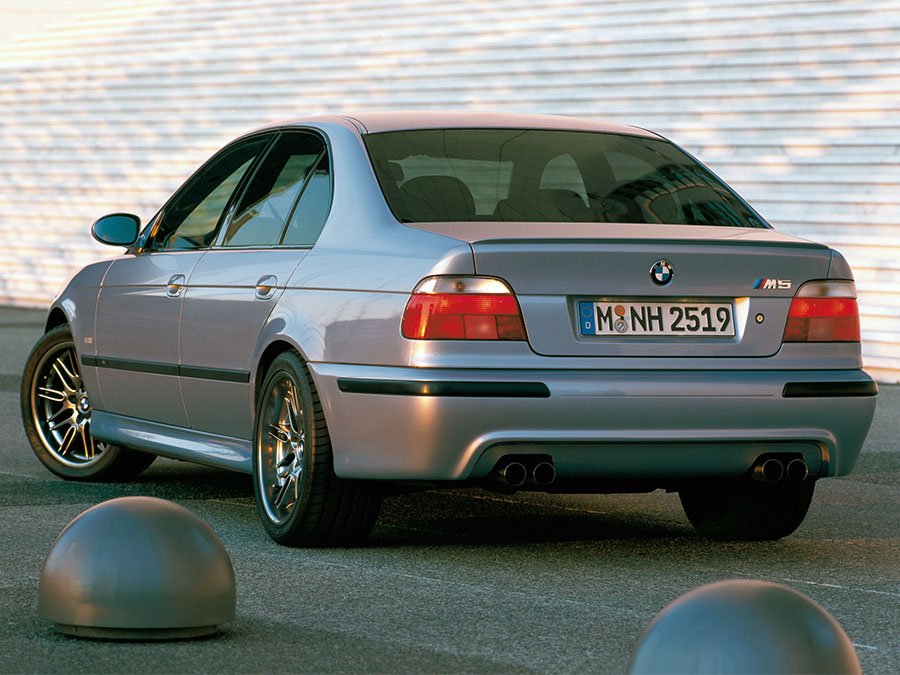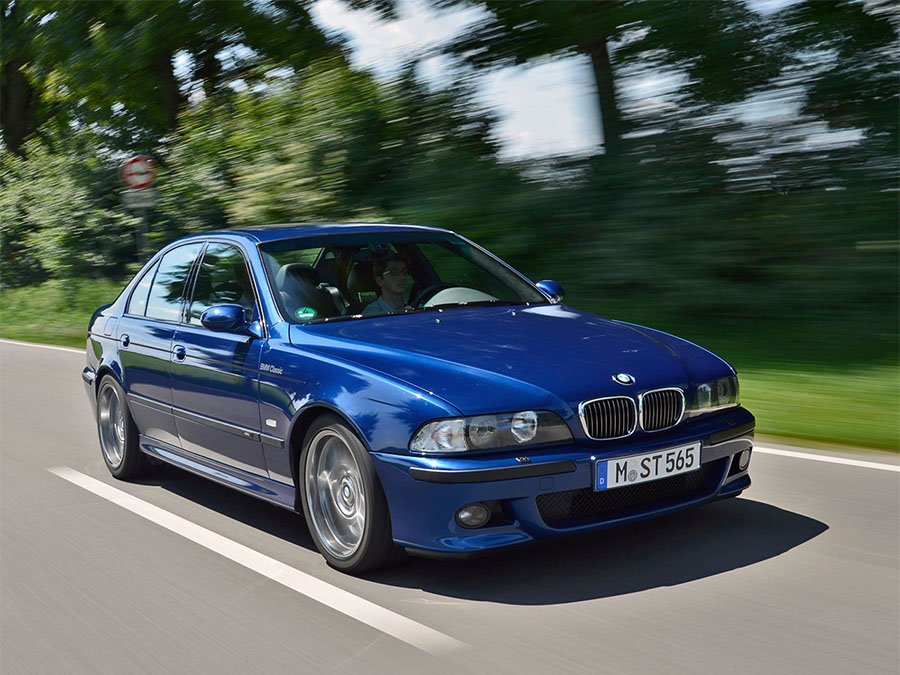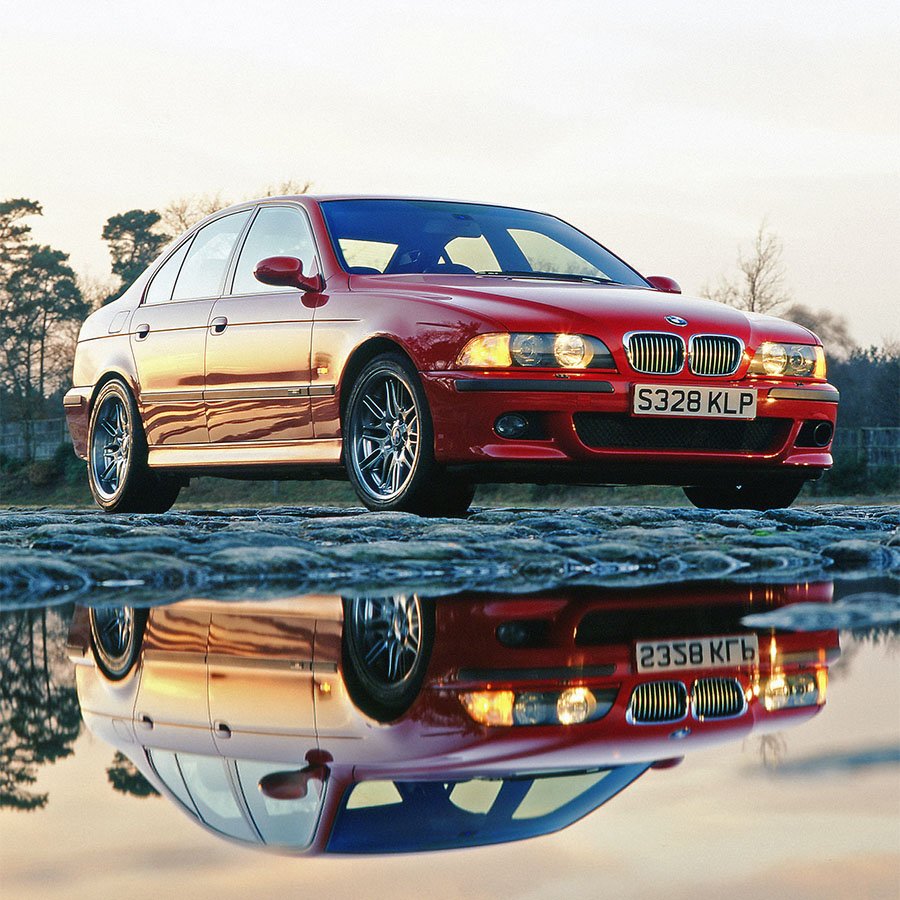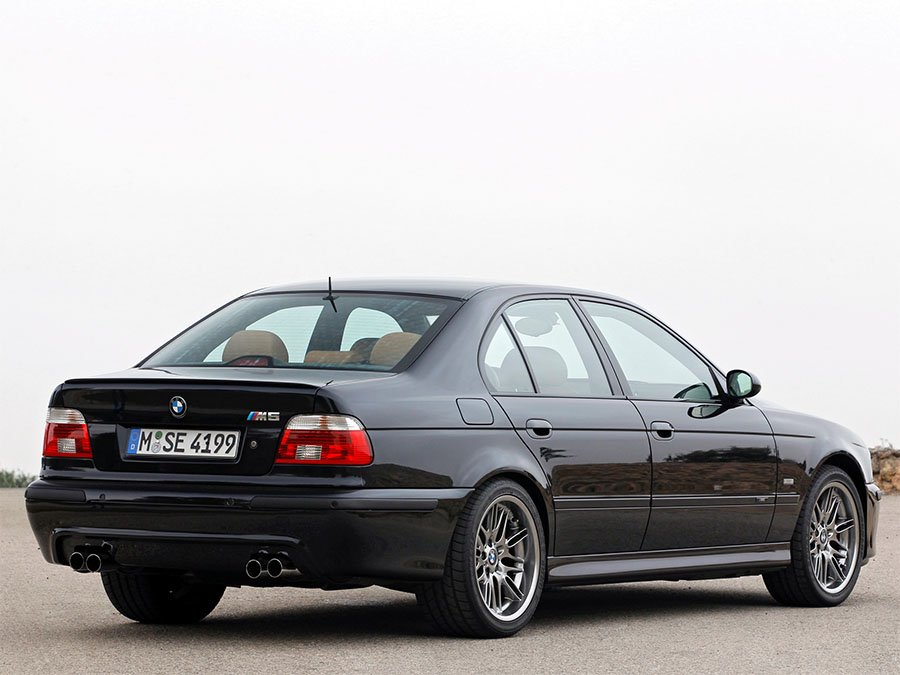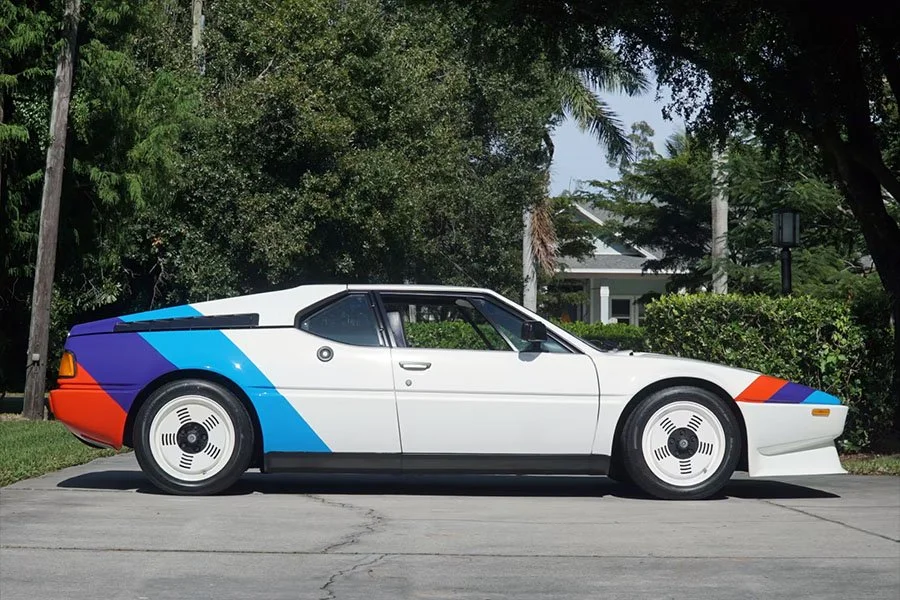Guide: BMW E39 M5 - a Historical & Technical Appraisal
/BACKGROUND
Since the original E12 5-series was launched back in 1972, BMW’s mid-size model had established itself as the best executive saloon on the market.
The E12 was subsequently replaced by the subtly updated E28 for 1982. A clean-sheet model, the E34, followed in 1987.
Although BMW Motorsport had quietly offered a tuned E12-based 5-series since 1974, it wasn’t until late 1979 when such a model was offered through the official dealer network. That car, the E12 M535i, began a trend that has seen every subsequent 5-series produced in Motorsport trim.
From the early 1970s to the late 1990s, genuine rivals for the hot 5-series had been few and far between. Buyers that wanted a tuned Mercedes-Benz or Jaguar typically had to visit the AMG or Lister works where bespoke low volume machines were turned out at vast expense (and normally with automatic transmission).
Meanwhile, the Lotus Carlton / Omega of the early 1990s was a blisteringly quick alternative. However, the Vauxhall / Opel brand had limited badge appeal and, after disappointing sales, this extraordinary General Motors flagship was never replaced.
BMW started work on what would be the fourth generation 5-series in 1989. The resultant E39 was launched to critical acclaim at the Frankfurt Motor Show in September 1995. Sales of the saloon variant began later that year. A Touring version joined the range twelve months after.
The E39 was originally offered with a choice of straight six engines (520i, 523i and 528i) or a new V8 (540i). A V8-powered 535i then came on stream in 1996.
At the Geneva Motor Show in March 1998, the flagship 540i lost its position at the top of the E39 range when the next highly anticipated iteration of the M5 was launched.
Like the 535i and 540i, the E39 M5 was powered by an all-alloy V8 whereas all previous Motorsport 5-series had used BMW’s smooth-running iron-block straight six.
The E39 M5 further differed from previous iterations in that it was assembled at BMW’s regular Dingolfing plant as opposed to the BMW Motorsport facility in Garching. The only body style offered was a four-door saloon.
CHASSIS
Starting point for this latest M5 was a standard galvanised steel four-door E39 bodyshell. At 2830mm, the wheelbase was 69mm longer than the outgoing E34.
An independent suspension layout comprised a MacPherson strut arrangement up front and multi-link back end. To save weight, the E39 made extensive use of aluminium for its suspension assemblies.
In typical M-car fashion, a variety of upgrades were made.
There were shorter, stiffer springs, custom Sachs dampers and thicker anti-roll bars.
The body mounts, thrust bushings and steering gear were all suitably reinforced and polyurethane auxiliary springs were used instead of rubber.
At the front, BMW Motorsport added custom wheel bearings. At the back, beefier lower rear control arms were imported from the E39 Touring, the rear integral link was adopted from the E38 750 iL and steel balljoints were used instead of rubber bushings.
The E39 M5 was the first Motorsport-tuned car to be fitted with BMW’s Dynamic Stability Control system (DSC) that optimised the car’s ride according to driving style. An evolution of the existing Automatic Stability Control, DSC monitored individual wheel speed along with yaw rate and longitudinal and lateral acceleration through various sensors. Most significantly, it enabled the brakes to be applied to any particular wheel to correct understeer or oversteer.
If desired, the DSC system could be turned off via a button mounted on the centre console.
Compared to other E39 derivatives, the M5 was equipped with a quicker steering ratio (14.7:1 as opposed to 17.9:1). When activated, a Sport button on the centre console gave the steering greater resistance.
ABS was standard along with uprated ventilated discs. The fronts went from 324mm on the 540i to 354mm. New floating two-piece front calipers improved heat dissipation but were not fitted to US market cars where single piece calipers were installed. The 540i’s 298mm rear discs were switched to bigger 328mm items.
Another unique feature of the M5 was its handsome 18-inch M Parallel Spoke II wheels which came with a satin chrome finish. The fronts were 8-inches wide and the backs measured 9.5-inches wide. Special tyres were developed. Track was 12mm wider at the back end.
A standard 70-litre fuel tank from the regular E39 was installed underneath the rear seat.
ENGINE / TRANSMISSION
To replace the M60 engine (which had been the company’s first V8 in nearly three decades), BMW introduced the updated M62 unit for the 1996 model year. Like its predecessor, the M62 was an all-alloy power unit with dual overhead camshafts and four valves per cylinder.
The S62 B50 motor fitted to the E39 M5 was a suitably uprated and enlarged version of the 4.4-litre M62 unit found in the 540i. It was also the first V8 tuned by BMW Motorsport offered to the public.
Capacity was increased from 4398cc to 4941cc. This was achieved by stretching the cylinder bores by 2mm (to 94mm) and extending the stroke by 6.3mm (to 89mm).
The M5 engine was the first BMW V8 to use double VANOS, a continuous variable valve timing system that adjusted both the intake and exhaust camshafts.
It also incorporated an electronically-actuated individual throttle body for each cylinder. Through BMW’s M Driving Dynamics system, the driver could select a Sport mode for a more aggressive throttle response.
Among the myriad other upgrades were dual air intakes and dual mass flow sensors, modified cylinder heads, oil-cooled pistons that were unique to each bank of cylinders, hollow camshafts, a double row timing chain for the intake cams, steel triple-layer head gaskets and a high-capacity water pump.
Hard driving activated a semi-dry-sump lubrication system that consisted of two additional scavenging pumps (one for each cylinder bank). Engine cooling was further improved via a coolant-to-oil heat exchanger.
Engine management was courtesy of the digital Siemens MSS 5.2 Motronic system.
Compression was upped 11.0:1 (from the 540i’s 10.0:1).
This formidable motor was finished off with a dual-cat free-flow four-outlet exhaust system. For US-bound cars, the cats were mounted closer together than in other markets.
Peak output was 394bhp at 6600rpm and 369lb-ft at 3800rpm.
For comparison, the 540i developed 282bhp at 5700rpm and 310lb-ft at 3900rpm.
The S62 B50 motor was immediately identifiable on account of its engine cover that was dressed up with M-branding and a BMW M Power script.
Only one gearbox was offered: a Getrag Type D six-speed manual. This was the same ‘box with identical ratios to the 540i. However, the M5 additionally came with a reinforced clutch, a shorter rear differential (3.15:1) and a mechanical limited-slip differential with 25% locking factor.
BODYWORK
To give the new M5 an appearance befitting of its specification, BMW Motorsport added a variety of cosmetic enhancements to the Joji Nagashima-designed E39.
At the front was a completely new bumper assembly. It featured three aggressively styled intakes, mesh grilles, circular spot lights and a discrete chin spoiler at each corner. The satin black single piece rubbing strip was switched to a split two-piece item.
Further up, BMW’s trademark kidney grilles were enlarged and given wider bright metal shrouds.
Down each flank were new aerodynamically-styled mirrors and M5 badges mounted on the side mouldings. Shadowline trim was standard.
The back end featured a small rear spoiler and a custom rear bumper assembly. Another M5 badge was adhered to the trunk lid.
A broadly similar but not identical pair of bumpers could be specified for other E39s as part of the M-sport kit.
Compared to the E34 M5, the E39 derivative was 64mm longer, 49mm wider and 45mm taller.
Interior
Like the exterior, the new M5’s interior came with some sporty extra equipment.
BMW installed a small diameter three-spoke Motorsport steering wheel with M tri-color stitching on the rim. Buttons for the audio system and cruise control were located on the upper spokes.
Special M-branded instrumentation was complemented by red needles and aluminium bezels. As usual, an oil temperature gauge replaced the fuel economy meter used by the rest of the range. Another special feature was a rev counter with LED indicators that varied the redline according to engine temperature.
Other M5-specific additions included a Motorsport footrest, M5 sill covers and an illuminated M-branded gear shift knob.
Heated and electric sport seats were fitted as standard. The driver’s seat had a three-position memory function.
The standard (Sport) trim package comprised alcantara seat upholstery and door panel inserts with Nappa leather bolsters and aluminium-style inserts. In some markets (such as the USA) leather was automatically fitted.
The list of standard equipment included Xenon headlights with wash / wipe facility, electric heated and folding mirrors, electric windows, electric heated front seats, an electrically adjustable steering column, automatic climate control, cruise control, an on-board computer and an audio system.
Soon after production began, an auto-dimming Motorsport rear-view mirror was fitted.
OPTIONS
At no cost, M5 buyers could request the M5 badges and rear spoiler be deleted. Additionally, Shadowline trim could be switched to Chromeline free of charge.
The optional Sport interior trim pack comprised Nappa leather upholstery with either faux aluminum or Bruyere Club wood inserts.
The optional Exclusive interior trim level comprised pleated Nappa leather upholstery with either Bruyere Club or Burr Walnut wood inserts.
Customers could also specify Extended Leather where the door grab handles, armrests, centre console and sun visors were covered in hide.
The next step up was a Complete Leather interior which further added hide to the dash, glovebox door, and upper door panels and lower B-pillar. The Complete Leather pack also included alcantara upholstery for the headliner, upper A, B and C-pillars and rear parcel shelf.
Other options included Park Distance Control, a graduated tint windscreen, double glazing, security glass, tinted rear / side glass, metallic paint, Bruyere Club or Burl Walnut wood trim, two-tone leather, comfort memory seats, an onboard TV, an electric sunroof, an electric glass sunroof, alcantara headlining, satellite navigation, an electric rear window blind, a tracker system, split-folding rear seats, rear side airbags, a ski bag, a choice of audio systems, telephone preparation, a GSM car phone, chrome sill trims, a voice control system for the GSM telephone and preparation for a hands-free telephone.
Some of this equipment was standard in certain markets. For example, an electric sunroof and satellite-navigation were fitted to all E39 M5s exported to the USA.
WEIGHT / PERFORMANCE
At 1795kg, the E39 M5 was 84kg heavier than the outgoing 3.8-litre E34 derivative.
However, the new machine offered appreciably quicker acceleration; 0-62mph took 5.3 seconds compared to 6.1 seconds for its predecessor.
As usual, top speed was electronically limited to 155mph.
EARLY PRODUCTION CHANGES
In May 2000, Park Distance Control became standard.
From June 2000, BMW added active front seats and a detachable tow bar to the options list.
2001 MODEL YEAR PRODUCTION CHANGES
A raft of updates were then made for the 2001 model year M5 which entered production in September 2000.
These cars were immediately identifiable on account of their ‘Angel Eye’ headlights. The tail lights now came with clear reversing elements.
Inside, BMW fitted the three-spoke steering wheel from the E46 M3 and instruments with light grey instead of black faces.
Safety was improved thanks to new rear head protection airbags and an updated type pressure monitoring system. Whereas Park Distance Control sensors had previously only been fitted to the rear bumper, they were now added to the front as well.
Options-wise, the screen for the navigation / audio system was enlarged and an alcantara headliner was bundled in with the Extended leather pack (as opposed to the Complete leather pack).
Improved BMW Individual audio systems were added to the options list a few months later.
LATER PRODUCTION CHANGES
Subsequent production changes were comparatively minor.
For the 2002 model year, BMW added a handful of new colours and made heat-insulating glass standard.
For the 2003 model year, the satellite-navigation system was switched to a DVD-based platform and rear side airbags became standard in North America.
END OF PRODUCTION
E39 M5 production ended in June 2003, by which time 20,482 examples had been completed.
This figure was split as follows:
LHD Euro market (10/98 to 06/03) 7895 units
RHD Euro market (10/98 to 06/03) 2595 units
LHD North American (09/99 to 06/03) 9992 units
Production of a replacement, the V10-powered E60 M5 Saloon and E61 M5 Touring, began in 2004 and 2007 respectively.
Text copyright: Supercar Nostalgia
Photo copyright: BMW - https://www.bmw.com
